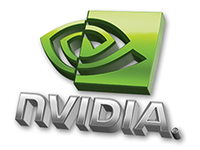New MacBooks Dump Intel Chipsets in Favour of Nvidia
When Apple went vocal about the Nvidia GPU failures in its MacBook Pro line nobody was overly surprised.
What is surprising (to some extent for some people) is that Apple has chosen to drop Intel in favor of Nvidia’s MCP79 platform in its new family of MacBooks — despite the GPU failures.
Nvidia, acting slightly out of character, has kept its MCP79 platform secret for most of this year. The MCP79 platform is said to be a substitute for Intel’s Centrino 2 Montevina platform, offering support for the same 1066 MHz front side bus, optional DDR3 memory support and PCI Express v2.0 interfaces.
There are several advantages that tip the scales in favor of the new platform. Down to the design perspective, Nvidia has consolidated all of the controller features into a single chip fabrication rather than the two required for the Intel counterpart – thus reducing the physical footprint required for mobile mainboards.
The MCP79 platform will feature Nvidia specific functions such as DriveCache, which uses flash storage to speed up loading times, Hybrid SLI, which switches from discrete to integrated graphics to increase battery life in low-demanding situations. It is not known at this time if Apple is planning to actually make use of these features, however.
In terms of graphics, it is believe that the MCP79 platform is to use a new set of GeForce 9300 and 9400 series integrated graphics processors. This is will offer a substantial performance increase and feature set over the Intel GMA X3100 solution on Apple’s current MacBooks, and the GMA 4500MHD found on newer notebooks using Intel’s reference hardware.
The new MacBook Pro line is rumored to be getting GeForce 9600M dedicated graphics – this has not been entirely confirmed, but the dumping of Intel definitely supports this.
Get Tom's Hardware's best news and in-depth reviews, straight to your inbox.
Apple is expected to make the full extent of Nvidia’s role clear at its MacBook Event tomorrow.
-
chaohsiangchen If true, then Apple Inc. should sell new MacBook at much cheaper price around $1499 with 4GB RAM and 320GB hard drive, while low end (2GB/250GB) MacBook should be at $799. MCP79 is cheap. This is one-chip solution for both north- and southbridge, and requires no additional graphics chip to do basic to low-end 3D function. This might be the reason why we still don't see GeForce 9400 motherboards around. If Apple Inc sell new MacBook $100 higher then the price I just posted, then I'll keep saying screw Apple Inc.Reply
BTW, hardware-wise, new MacBook with GeForce 9400 might be a great machine for mobile Linux running Compiz-Fusion window manager. -
Mromson It's been suspected that Nvidia will try to compete with Intel. Lets just hope that Intel can keep up with the Graphics Card giant. ;) I am slightly worried about AMD though, ATI is going fine - but AMD is falling hard.Reply -
fulle ^From my understanding the GPUs themselves weren't bad, but rather the boards they were put in... since they crack under temperature changes (room temp - 80c, back down to idle temps). Which explains why the laptop GPUs are failing at a higher rate (laptop GPUs would be exposed to more extreme temperature changes more often.)Reply
Moving forward, I would highly doubt Nvida would make the same mistake anytime soon... so, this can only be a good thing for Apple. The Intel GMA X3100 that's in a lot of the base Macbooks is a pretty weak GPU, so it'll be interesting to see what kind of performance boost we see with the switch to Nvidia 9400 GPUs. Hopefully, we'll see the Macbook Pros take advantage of the Hybrid GPU technology as well, for a nice boost to battery life when discrete graphics aren't needed.
I'm still a bit disappointed we won't see high end ATI GPUs in Apple computers (which I anticipate won't happen due to a partnership with Nvidia). But, ATI hasn't had a competitive high end laptop part for years anyway... -
chaohsiangchen http://images.macrumors.com/article/2008/10/13/231653-2008-10-13mbpleak-4_400.jpgReply
http://images.macrumors.com/article/2008/10/13/231653-2008-10-13mbpleak-5_400.jpg
http://www.macrumors.com/2008/10/13/macbook-pro-photo-no-mouse-buttons/ -
neiroatopelcc Since I don't, and probably never will, use any apple hardware, I can't much care about the actual news part of this piece. But I am delighted to see Apple ditching Intel to some extend. Not because I dislike Intel, I certainly don't. But because it might help Amd if Intel gets slightly fewer sales, even if these do go to their other competator. It's not like amd has anything to offer for notebooks anyway, so they won't get the job.Reply -
frozenlead AMD's mobile chipsets are more widely used than nVidia's.Reply
The only thing I read in there that apple cares about is: cheaper, smaller.
Funny thing is, the price of the notebook itself probably won't come down too far.
I don't understand why people buy these. Look at those pictures. The new one looks exactly like the old one, except it's shiny.
I will never get one. -
neiroatopelcc frozenleadAMD's mobile chipsets are more widely used than nVidia's. The only thing I read in there that apple cares about is: cheaper, smaller.Funny thing is, the price of the notebook itself probably won't come down too far.I don't understand why people buy these. Look at those pictures. The new one looks exactly like the old one, except it's shiny. I will never get one.Reply
The new one looks like the old one, because the design of the old one looks as the buyers want it I assume.
I'm no fan of laptops in general, and wouldn't even buy an apple product if it would turn out to be worth its cost, but I can imagine a lot of people who'd like to have one of those nice looking ones, instead of a normal 'black acer plastic thing' or 'gray hp plastic thing' etc.
